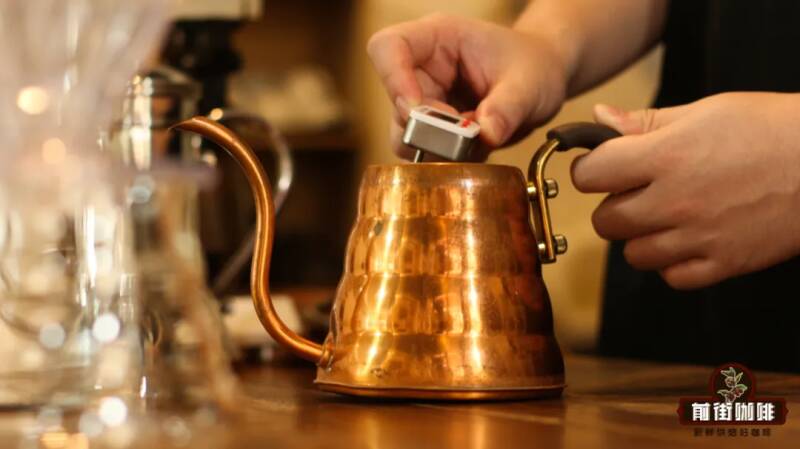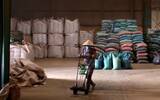What is the water temperature used to brew deeply roasted coffee beans? Do I need to use hot water at 92°C when making lightly baked beans by hand?
I believe that when you flush your hands, you will more or less encounter such a situation: although all the parameters are normal, there is no problem with the water quality, method and time, but the coffee is not extracted enough.

Qianjie mentioned such a sentence in yesterday's article that if the extraction is still insufficient when all the extraction parameters tend to be normal, then the problem is likely to be in the water temperature used in the extraction! Coffee beans with different roasting degrees have different requirements for water temperature because of their own structure, so we will divide them into different ranges of water temperature. It is important to know that even if you use the corresponding water temperature, if you ignore some details during cooking, it may lower the temperature of the water and make a difference in the extraction. Therefore, it is not only the temperature shown on the thermometer, but also the details of cooking, which also need to be paid attention to.

Having said that, a suitable starting water temperature is still very important! So let's first see what kind of water temperature is suitable for coffee beans with different roasting degrees.
What kind of water temperature is suitable for coffee beans with different roasting degrees? The temperature of the water determines the dissolution efficiency that this "solvent" can hold. The higher the water temperature, the higher the dissolution efficiency, and vice versa. The roasting degree of coffee beans determines the density of coffee beans. when the roasting degree of coffee beans is lighter, the relative density is higher, and the higher the density is, the higher the extraction efficiency is if hot water wants to dissolve the flavor substances in coffee. Therefore, we can know that the lighter the roasting degree of the coffee bean is, the higher the extraction water temperature is. When the roasting degree of coffee beans is deeper, the expansion rate of coffee beans is higher, and the density is naturally lower. With low density, it is often said that the structure is loose, and hot water can dissolve coffee flavor substances more easily, therefore, we do not need to use too high water temperature for extraction!
Generally speaking, Qianjie will determine its grinding, water temperature, and suitable filter cup according to the degree of bean baking. In the face of high-density, light-roasted coffee beans, Qianjie will use a water temperature of about 91 ~ 93 °C for extraction, while if the extraction object is a deep-roasted coffee bean, it will be extracted at a water temperature of about 86 ~ 89 °C. The specific water temperature will be determined according to the state of the beans and the thickness of the grinding. When the beans are fresher or coarser when they are ground, we use a relatively higher temperature for extraction because they require higher dissolution efficiency to extract flavor substances, while the finer the grinding, the less fresh the state needs to be reversed.
After talking about the appropriate water temperature for each baking degree, let's talk about how to exert the "maximum power" of these hot water!
How to exert the "maximum power" of hot water? I don't know if my friends have any impression, but in the cold winter, Qianjie shared an article about raising the water temperature. In fact, the content is very simple! That is, when hot water is poured out of the pot, it will come into contact with a large amount of fresh air, which will absorb part of the temperature of the hot water, so that the hot water that should have been 92 °C is no longer 92 °C. The famous pine house cooking takes advantage of this principle to reduce the boiling hot water to the ideal temperature.
And this phenomenon will be more obvious in winter! So we can know that the height of water injection will affect the temperature of the water. When the height is higher, the loss of hot water temperature will be more, and the extraction efficiency will decrease. Therefore, Qianjie suggests that when carrying out routine cooking, the water injection height should be controlled at a distance of about one punch from the powder bed. In addition to the height of water injection, the spout that has not been preheated will also absorb the temperature of hot water!
In order to better allow players to control the flow of water, most hand pots will choose a slender swan neck for diversion! In the same way as filter cups, without preheating, they will take the lead to absorb part of the temperature of the hot water to "heat themselves", which will also make the hot water lose its temperature.
So often, in the absence of preheating, the hot water used in steaming is not the target temperature we set! This will lead to coffee powder can not fully release carbon dioxide in the steaming stage, then the subsequent injection of hot water is not so good extraction conditions! Although the impact is minimal (yes, but not much), it is often so bad that the whole cup of coffee experience becomes less enjoyable! So Qianjie suggests that you can pour out a small amount of hot water to preheat before cooking! It just so happens that the filter paper needs to be affixed to the filter cup, so this small amount of hot water can just be used on the wet filter paper! Not only successfully preheated the spout filter cup, but also made the filter paper stick to the filter cup, it can be said that it has the best of both worlds.
-END-
Important Notice :
前街咖啡 FrontStreet Coffee has moved to new addredd:
FrontStreet Coffee Address: 315,Donghua East Road,GuangZhou
Tel:020 38364473
- Prev

How to make a milk brick iced latte? Is Avjado ice cream with concentrated? What is latte?
It's the season when cicadas and sparrows talk outside the window again, so it's time for coffee drinks that are so popular in summer to return to the menu! Orange C, cucumber, pineapple, coconut green American, mint latte, afjado, etc. are all the hottest coffee products in various coffee shops every summer. Since we can spend the summer
- Next

Vietnam's coffee bean export revenue in the first half of the year reached US$3.04 billion! But the harvest is not good
Recently, the Vietnam Customs General Administration released export data. As of the first half of June, Vietnam has exported a total of 862,400 tons of coffee this year, with export revenue of 3.04 billion US dollars. Even in terms of overall data, exports fell by 8% year-on-year, and losses were lost in the earlier reported theft of coffee beans and other goods at the port.
Related
- What effect does Italian American coffee with filter paper have? Will coffee taste better if it is put on filter paper at the bottom of the powder bowl?
- What is the color difference in coffee beans? What are the characteristics of honey processed coffee beans? Why are the anaerobically treated coffee beans uneven in color?
- How does novice Xiaobai quickly get started and make coffee? Newbies learn to make coffee by hand and share the specific steps and process process!
- Costa tea has a shelf life of 100 years?! Expert: Unable to verify
- It's a huge uproar! American milk addition was rejected by Manner employees?!
- Mocha pot coffee bean recommendations| How fine and how much powder should be used for grinding? What parameter ratios do I need to use to make milk with Mocha pot coffee?
- What are the characteristics of the world's top ten coffee beans treated with Costa Rica honey? How to make black honey kadura from Tarazhu Pilon Processing Plant taste good?
- How to make deep-roasted coffee? What grinding water temperature does authentic Jamaica Blue Mountain No. 1 coffee use to brew it well?
- Selected high-grade rose summer coffee flavor tasting guide Why Panama rose summer has the aroma of flowers and fruits
- What equipment does a novice Xiaobai need to buy to learn to make coffee? Filter cup electronic scale bean grinder manual flushing pot purchase guide

